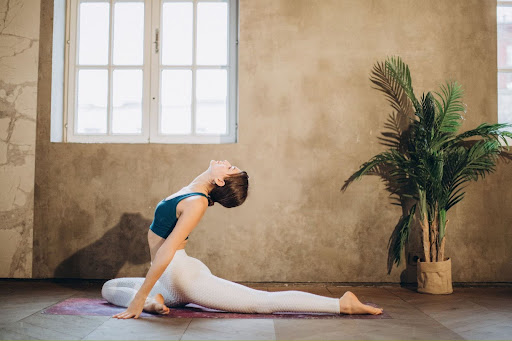Sleep is a fundamental pillar of health, yet millions of people worldwide struggle with sleep-related issues, including insomnia, poor sleep quality, and irregular sleep patterns. Yoga, an ancient practice that combines physical postures, breathing exercises, and meditation, has emerged as a promising solution for improving sleep quality. This article delves into the scientific connection between yoga and better sleep, exploring its mechanisms, benefits, specific practices, and research findings.
Understanding Sleep and Its Importance
What Happens During Sleep?
Sleep is a dynamic physiological process essential for physical and mental restoration. It consists of two main stages:
- Non-Rapid Eye Movement (NREM) Sleep: Includes deep sleep stages critical for cellular repair and immune function.
- Rapid Eye Movement (REM) Sleep: Associated with dreaming and cognitive functions like memory consolidation.
The Role of the Autonomic Nervous System (ANS)
The ANS regulates involuntary body functions like heart rate and respiration. It has two branches:
- Sympathetic Nervous System (SNS): Activates the “fight-or-flight” response.
- Parasympathetic Nervous System (PNS): Promotes relaxation and the “rest-and-digest” state.
Imbalances in the ANS, often caused by stress or anxiety, can disrupt sleep. Yoga helps restore this balance by activating the PNS.
How Yoga Improves Sleep
1. Stress Reduction
Yoga reduces cortisol levels (the stress hormone), calming the mind and body. This relaxation response prepares the body for restful sleep.
2. Activation of the Parasympathetic Nervous System
Through deep breathing and meditation, yoga stimulates the vagus nerve, enhancing PNS activity. This lowers heart rate and blood pressure, creating an ideal state for sleep.
3. Regulation of Melatonin Production
Yoga has been shown to increase melatonin levels, a hormone that regulates sleep-wake cycles.
4. Physical Relaxation
Yoga poses stretch and relax muscles, relieving tension accumulated during the day. This physical relaxation complements mental calmness.
5. Improved Mindfulness
Mindfulness cultivated through yoga helps individuals become more aware of their thoughts and emotions, reducing anxiety that often disrupts sleep.
Scientific Evidence Supporting Yoga for Better Sleep
Randomized Controlled Trials
Several studies have demonstrated yoga’s efficacy in improving sleep quality:
- A 2023 meta-analysis found that yoga significantly improved sleep quality in breast cancer patients. Participants practicing yoga reported reduced insomnia symptoms and better overall rest compared to control groups.
- A study on elderly individuals practicing long-term yoga showed improved Pittsburgh Sleep Quality Index (PSQI) scores compared to non-practitioners.
Yoga for Insomnia
Research highlights yoga’s effectiveness in managing insomnia:
- A 2022 study on chronic insomnia disorder found that personalized yoga practices reduced arousals during sleep and improved subjective sleep quality.
- Another trial revealed that practicing yoga three times a week for eight weeks significantly improved sleep duration and efficiency.
Yoga for Stress-Induced Sleep Disorders
Stress is a leading cause of poor sleep. Studies show that yoga’s ability to reduce stress directly correlates with improved sleep outcomes.
Key Yoga Practices for Better Sleep
1. Breathing Exercises (Pranayama)
Pranayama techniques like Nadi Shodhana (alternate nostril breathing) help balance the ANS, promoting relaxation:
- Sit comfortably.
- Close one nostril with your thumb while inhaling through the other.
- Alternate nostrils after each exhale.
2. Meditation
Mindfulness meditation enhances relaxation by focusing attention on the present moment:
- Sit or lie down in a quiet space.
- Focus on your breath or repeat a calming mantra.
3. Restorative Yoga Poses
Certain poses are particularly effective for promoting relaxation:
| Pose | Benefits |
| Child’s Pose (Balasana) | Relieves stress and gently stretches the spine |
| Legs-Up-the-Wall (Viparita Karani) | Improves circulation and calms the nervous system |
| Corpse Pose (Savasana) | Induces deep relaxation |
| Reclining Bound Angle Pose (Supta Baddha Konasana) | Opens hips and promotes mental calmness |
Yoga Routines for Nighttime Relaxation
Incorporating yoga into your bedtime routine can prepare your body for restful sleep:
- Start with gentle stretches like Cat-Cow Pose to release tension in the spine and regulate breath.
- Transition into restorative poses such as Legs-Up-the-Wall or Child’s Pose to calm the nervous system.
- Add hip openers like Supine Figure Four or Bound Angle Pose (Supta Baddha Konasana) to release built-up tension from sitting or standing all day.
- Practice gentle twists, such as Reclined Spinal Twist, to aid digestion and relieve lower back discomfort.
- Incorporate forward folds, like Seated Forward Bend or Standing Forward Fold, to soothe the mind and stretch the back body.
- Use pranayama (breathwork) like 4-7-8 breathing or Alternate Nostril Breathing to slow the heart rate and quiet the mind.
- Try guided meditation or body scan to mentally transition from the day’s stress to a restful state.
- Conclude with 5–10 minutes of Savasana (corpse pose) or seated meditation, focusing on deep relaxation and letting go.
Special Considerations
While yoga offers numerous benefits, it may not be a standalone solution for severe sleep disorders like chronic insomnia or sleep apnea. Combining yoga with other treatments, such as cognitive-behavioral therapy or lifestyle changes, may yield optimal results.
Conclusion
The connection between yoga and better sleep is well-supported by scientific research. By reducing stress, balancing the autonomic nervous system, and promoting physical relaxation, yoga serves as a holistic approach to improving sleep quality. Whether practiced as part of a bedtime routine or integrated into daily life, yoga offers a natural remedy for achieving restorative rest.
For those struggling with sleep issues, adopting a regular yoga practice could be transformative—not only for better sleep but also for enhanced overall well-being.



